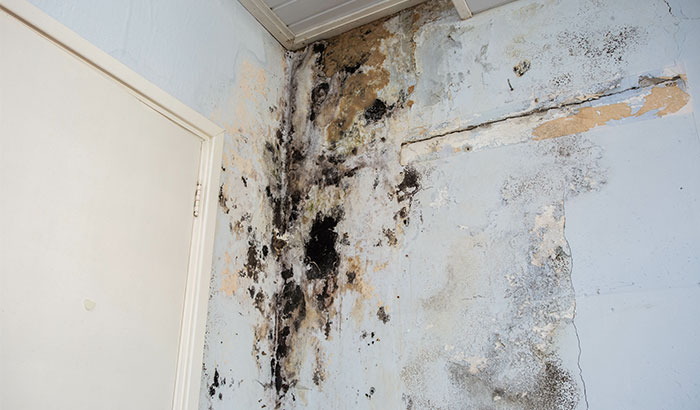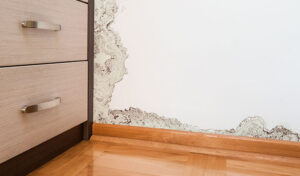Mold damage is a common problem in homes, as it can cause serious health problems if not properly addressed. However, identifying mold damage can be challenging, as mold can grow in hidden areas and may not always be visible to the naked eye.
Assessing the extent of mold damage is important in determining the appropriate remediation measures. Preventing mold damage is also essential to maintaining a healthy living environment and protecting your home from costly damage.
This blog will explore tips for identifying, assessing, and preventing mold damage and the importance of professional mold remediation. By following these tips and seeking professional help when necessary, you can protect your home and ensure a safe and healthy living environment for you and your family.
What Is Mold?
Mold is a type of fungus that grows in warm, damp, humid areas. It is a multi-cellular organism that reproduces by releasing spores into the air. These spores can travel through the air and land on surfaces, where they can grow into new mold colonies if the conditions are right.
Mold can grow on a variety of surfaces, including wood, drywall, carpet, and insulation. It can also grow in hidden areas, such as inside walls or under flooring. Mold thrives in damp environments and can grow rapidly in areas with high humidity levels or water damage.
While some types of mold are harmless, others can cause health problems. Mold exposure can cause various health issues, including respiratory problems, allergic reactions, and skin irritation.
People with weakened immune systems or pre-existing respiratory conditions are particularly vulnerable to the health effects of mold exposure. We’ll discuss these health issues more in the next section.
It’s important to identify and address mold growth as soon as possible to prevent damage to your home and protect your health. Mold can weaken the structural integrity of your home and cause damage to walls, ceilings, and floors. It can also cause unpleasant odors and discolor surfaces.
If you suspect mold growth in your home, it’s important to have it professionally assessed and remediated to ensure it is safely and effectively removed.
Health Risks of Mold
Mold exposure can cause a wide range of health issues, including respiratory problems, allergic reactions, and skin irritation. Some common symptoms of mold exposure include coughing, wheezing, difficulty breathing, and eye, nose, and throat irritation. In some cases, mold exposure can also cause skin rash or headache.
Long-term exposure to mold can have more serious health effects, including the development of asthma and other respiratory illnesses. People with weakened immune systems, such as those undergoing chemotherapy or with HIV/AIDS, may also be more susceptible to infections caused by mold.
Mold can also produce mycotoxins, toxic substances that can cause a range of health problems depending on the mold type and the exposure level. Some mycotoxins are known to cause cancer, while others can cause neurological problems and other serious health issues.
Identifying Mold Damage
Identifying mold damage in your home can be challenging, as mold can grow in hidden areas and may not always be visible to the naked eye. Here are some signs to look for when trying to identify mold damage:
- Visible mold growth: Mold can appear as fuzzy or slimy patches that are usually black, green, or white in color. It can grow on a variety of surfaces, including walls, ceilings, floors, and furniture.
- Musty odor: If you notice a persistent musty odor in your home, it may be a sign of mold growth. Mold produces volatile organic compounds (VOCs) that can cause a strong, unpleasant odor.
- Water damage: Mold thrives in damp environments, so any areas of your home that have suffered water damage are at risk for mold growth. Look for signs of water damage, such as water stains, discoloration, or peeling paint.
- Allergic reactions: If you or someone in your household is experiencing allergic reactions, such as sneezing, coughing, or itchy eyes, it may be a sign of mold exposure.
- Increased humidity: Mold thrives in high-humidity environments, so if you notice an increase in humidity levels in your home, it may be a sign of mold growth.
Assessing the Extent of Mold Damage
Assessing the extent of mold damage is important to determine the appropriate remediation measures. If you approach mold too mildly, it might not be entirely eradicated. The good thing is that there are several steps you can take to assess just how bad your mold damage is. Let’s take a look.
- Visual inspection: A visual inspection is the first step in assessing mold damage. Look for visible signs of mold growth, such as discoloration, staining, or fuzzy patches. Check areas that are prone to moisture, such as basements, crawl spaces, and bathrooms.
- Moisture meter: A moisture meter can be used to measure the moisture content of building materials, such as drywall or wood. High levels of moisture can indicate the presence of mold growth.
- Air sampling: Air sampling can determine the mold spores’ concentration in the air. This can help identify areas of the home with high mold growth levels.
- Infrared camera: An infrared camera can be used to detect areas of moisture that are not visible to the naked eye. This can help identify hidden areas of mold growth, such as behind walls or under floors.
- Professional inspection: A professional mold inspector can use a combination of these techniques to assess the extent of mold damage. They can also provide recommendations for mold remediation and prevention to help ensure that the mold does not return in the future.
It’s important to assess the extent of mold damage before beginning remediation to ensure that all areas of mold growth are identified and treated. Failure to fully remediate mold damage can lead to ongoing health issues and damage to the structure of the home.
Preventing Mold Damage
Preventing mold damage is essential to maintaining a healthy living environment and protecting your home from costly damage. Mold thrives in damp environments, so controlling moisture and improving ventilation are key to preventing mold growth.
Regular cleaning and monitoring of humidity levels can also help prevent mold damage. In addition, using mold-resistant products in areas prone to moisture can help prevent mold growth. Following these tips can help prevent mold damage in your home and ensure a safe and healthy living environment for you and your family.
- Control moisture: Mold thrives in damp environments, so controlling moisture in your home is important. Fix any leaks or water damage promptly, and use a dehumidifier in areas with high humidity.
- Proper ventilation: Proper ventilation is essential to preventing mold growth. Use exhaust fans in bathrooms and kitchens, and open windows to improve airflow.
- Regular cleaning: Regular cleaning can help prevent mold growth by removing dirt and dust that can contribute to moisture buildup. Clean bathrooms and kitchens regularly, and vacuum carpets and upholstery regularly.
- Monitor humidity levels: Use a hygrometer to monitor humidity levels in your home. Keep humidity levels between 30-60% to prevent mold from growing.
- Use mold-resistant products: Use mold-resistant products, such as drywall and paint, in areas that are prone to moisture, such as bathrooms and kitchens.
Following these tips can help prevent mold damage in your home and ensure a healthy living environment for you and your family. However, it’s not always possible to keep mold from growing. It can really sneak up on you, which is why professional mold remediation is so important if you do find mold in your home.
The Importance of Professional Mold Remediation
Professional mold remediation is important because mold can be difficult to fully remove and can cause serious health problems if not properly addressed. Here are some reasons why professional mold remediation is necessary:
- Proper identification: Professional mold remediation companies have the tools and expertise to properly identify the type and extent of mold growth in your home. This is important because different types of mold require different remediation methods.
- Health risks: Exposure to mold can cause a variety of health problems, including respiratory issues, allergies, and infections. Professional mold remediation companies use specialized equipment and techniques to safely remove mold and prevent it from spreading throughout your home.
- Prevention of future growth: Professional mold remediation companies remove existing mold and identify and address the underlying causes of mold growth, such as moisture buildup. This helps prevent future mold growth in your home.
- Structural damage: Mold can cause serious damage to the structure of your home if left untreated. Professional mold remediation can help prevent this damage and protect the value of your home.
- Insurance coverage: Many insurance policies require professional mold remediation to be covered. Hiring a professional mold remediation company can help ensure that your insurance claim is approved and that the remediation is done properly.
Contact Total Flood & Fire Restoration Today
If you suspect mold damage in your home, acting quickly to prevent further damage and protect your family’s health is important. Total Flood and Fire Restoration is here to help with our professional mold remediation services.
Our team of experienced professionals can assess the extent of mold damage in your home, safely remove mold, and prevent future growth. We use state-of-the-art equipment and techniques to ensure that your home is mold-free and safe for you and your family.
Contact Total Flood & Fire Restoration today to schedule a consultation and learn more about our mold remediation services. Call us now at 385.503.2572. Don’t wait; let us help you protect your home and your family from the dangers of mold damage.







